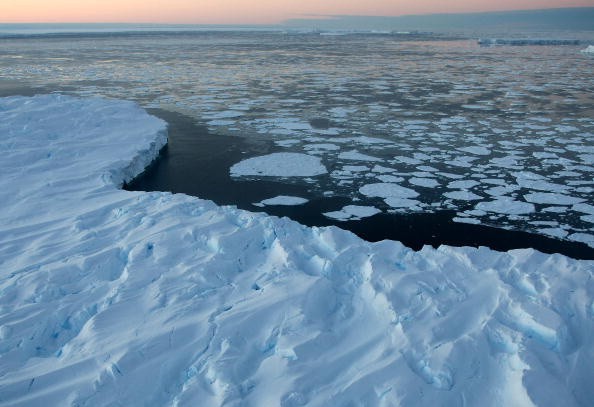A new study suggested that phytoplankton blooms could exist under and beneath the Antarctic ice. Researchers noted that less light was available under the sea ice, which could affect the emergence of phytoplankton in the region.
Phytoplankton plays a significant role in the sea and ocean, providing needed nutrients in the food webs. According to the National Ocean Service, phytoplankton exists in a balanced ecosystem known as microalgae in the sea.

Importance of Phytoplankton
The NOAA National Ocean Service explained that phytoplankton requires important sunlight to thrive and live. As they float in the water, they could receive the needed sunlight. The sunlight could penetrate the water, providing the phytoplankton nutrients to grow.
On the other hand, the NASA Earth Observatory said that phytoplankton refers to microscopic organisms that could live and thrive in salty and fresh waters. The report added that phytoplanktons are crucial in the food web.
Meanwhile, the report added that phytoplankton had been a source of food in the ocean for many aquatic animals, including snails, shrimps, and many others.
However, the report explained that phytoplankton could be beneficial to aquatic life but also produce harmful blooms, which could affect other animals. The harmful algae blooms (HABs) could be due to excessive nutrients from the phytoplankton.
Meanwhile, the NASA Earth Observatory added that bloom could emerge when phytoplankton populations excessively grow.
As a result, scientists and researchers have been studying the emergence of phytoplankton and its effects on oceans. The report also explained that phytoplankton has been crucial in the sea, and any potential threat could also impact biodiversity and food web sources.
The research can be read on the Phys.org website.
Phytoplankton blooms in Antarctic Ice
As explained, phytoplankton thrives due to sunlight as it floats in the ocean. Phytoplankton depends on sunlight to survive, and less sunlight could impact their populations beneath the water. However, researchers noted that the emergence of phytoplankton under or beneath the Antarctic Ice could not be possible due to the packed sea ice covering the sea.
A recent study explained that phytoplankton ice blooms were observed in the Antarctic Ice.
Researchers explained that over 50% of under-ice could suggest the emergence of under-ice blooms. The report also added that light could have entered from small ocean areas.
Also Read : Protected Areas Provide Important Habitat for Biodiversity and Thermal Buffer Against Climate Change
Furthermore, the researchers suggested that phytoplankton blooms occurred. According to Dr. Christopher Horvat, there could be under-ice blooms beneath the ocean waters, implying that potential life lived beneath them. Horvat, who led the team of researchers, is from Brown University and the University of Auckland.
Horvat also added the study using the data from NASA's Sattelite helped to observe the ice in Antarctica, studying if light managed to penetrate the region.
The study also observed that phytoplankton could increase before the sea ice's retreat. It added that further researches are important to investigate if phytoplankton could attract marine animals beneath.
Related Article : White Sharks Found to Migrate to South Florida and Hunt Tuna and Seals
For more similar stories, don't forget to follow Nature World News.
© 2025 NatureWorldNews.com All rights reserved. Do not reproduce without permission.





